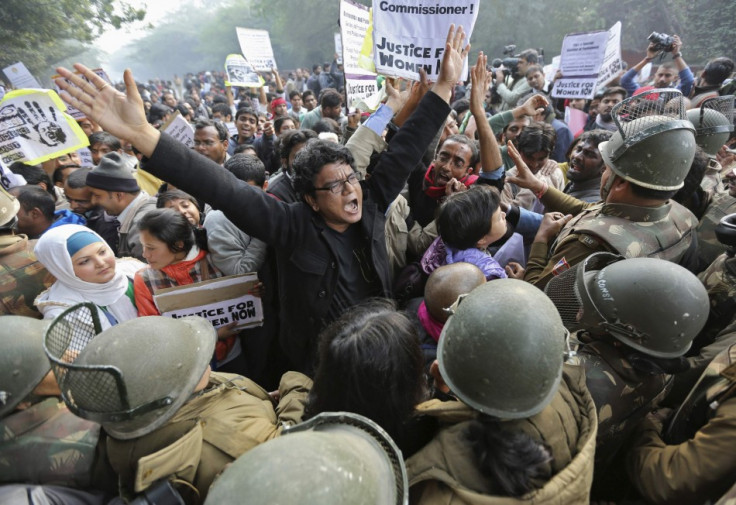Delhi Gang Rape: Why Did Victim Die in Singapore?

India's capital New Delhi is preparing for a new wave of protests following the death of the 23-year-old woman who was gang-raped, assaulted and thrown out of a moving bus.
The young victim, whose identity is still not disclosed, died at 4:45am SST on Saturday 29 December (8:45pm Friday GMT) after fighting for her life for 13 days.
As news of the death broke on Saturday morning in India, the government banned vehicles from the city's central district and closed down metro stations to prevent protesters from gathering.
Questions are being asked about the timing of decision to move the victim to the Mount Elizabeth Hospital in Singapore, which is a specialised facility for organ transplants. There is also some uncertainty about the nature of the treatment she received at New Delhi's Safdurjung Hospital; the Singapore hospital stated that she had suffered "significant brain injury" and a lung infection, which the daily medical bulletins from the Delhi hospital never revealed.
Was it a Political Move to Quash Protests?
Doctors and medical experts have already questioned the wisdom of moving the woman, who was in a precarious condition, to another hospital 2,600 miles and six hours' flight away.
Did the government act to save the victim's life, or to deflect attention from Indian outrage that was threatening to get out of hand? Was it a crisis management solution conjured up at the topmost levels of Delhi's political corridors?
The government's decision is widely seen as a political, rather than medical, one.
"I just can't understand why a critically ill patient with infection in blood and body, high-grade fever and on the ventilator is being transferred. It seems more of a political move," Samiran Nundy, an expert on organ transplant with Delhi's Ganga Ram Hospital, told the Indian newspaper The Hindu.
The Indian government has been trying to defend its decision. Both the Indian home minister and foreign minister backed the move and disclosed that the decision was taken at the highest level, with the full knowledge of the prime minister.
Shortly after the victim's arrival by air ambulance in Singapore, India's Home Minister Sushilkumar Shinde said: "She was shifted after taking opinions of doctors from the Safdarjung hospital. Trauma doctors were also consulted. ... We will give her the best of treatment."
Foreign Minister Salman Khurshid defended the decision the following day. "The shifting was not done due to some political reasons. It was done for medical purposes. It was purely a medical decision taken by the doctors."
Protests up Pressure on Politicians
The woman was moved just as daily protests on the streets of Delhi were growing in size and ferocity. Students and working women flocked to the nerve centre of the capital and began protesting before the Indian president's official house, near the parliament complex and in front of the prime minister's office.
Peace marches and candlelight vigils also took place in front of India Gate, the war memorial in New Delhi. The protesters were hurling direct, uncomfortable questions at the government. Incensed demonstrators were demanding an end to sexual atrocities against women in the country, where a rape takes place every 54 minutes.
As the victim's condition started to worsen, the government reportedly sensed that the protests could reach tipping point. Many see the decision to move the woman in this context. A more charitable view is that the government wanted to give her the best possible treatment. It is the first time a private citizen has been flown abroad for treatment at government expense.
After the victim was moved, the protests ebbed. This was in part also due to the death of a police constable who was in action at the protest venue. There are conflicting versions of his death.
In the wake of the young woman's death, the government has a lot of questions to answer. Not the least of these is why she was moved such a long distance by aeroplane at a time when her condition had deteriorated alarmingly?
During the flight, her blood pressure began to fluctuate and the doctors were forced to create an arterial line (a thin catheter inserted into an artery) to stabilise her. Dr M C Mishra, chief of All India Medical Sciences Trauma Centre, said the doctors took a calculated risk.
© Copyright IBTimes 2025. All rights reserved.




















